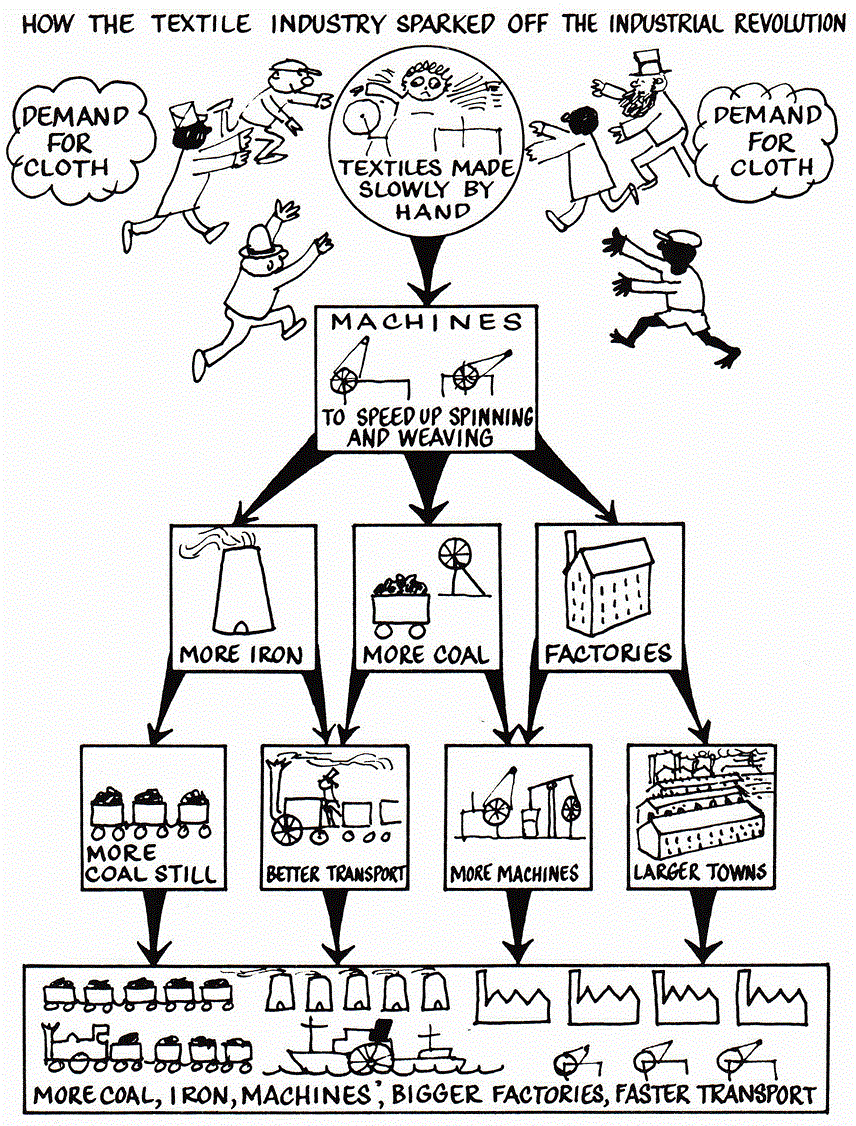
The Impact of the Textiles Revolution

Introduction
Results of the Textile Revolution
Historians of the Industrial Revolution have always emphasised the importance of the Textiles Industry. In 1939, the economist JA Schumpeter wrote:
English industrial history (1787-1842) can be almost resolved into the history of a single industry.
And in 1968, the British historian Eric Hobsbawn summed it up:
Whoever says Industrial Revolution says cotton.
In the last lesson, you were asked to think about how the cotton industry was the perfect example of the traditional view of Britain’s ‘Industrial Revolution’ – with its great men, inventions, factories, sudden and sustained growth etc.
For the ‘traditional’ historians, however, cotton was not just the exemplar of the Industrial Revolution, it was the first industry to industrialise – the pathfinder – indeed even the cause of the Industrial Revolution (see Source 1).
This webpage will allow you to investigate this idea.
After you have studied this webpage, answer the question sheet by clicking on the 'Time to Work' icon at the top of the page.
Links:
The following websites will help you research further:
The Textile Impact:
•
Good webpage •
BBC Bitesize •
Impact of the revolution – YouTube video
1 Peter Moss, History Alive 3, 1968

Introduction (continued)
Rethinking the Textile Revolution
Recently, some historians have suggested that maybe cotton was not so important a factor in the Industrial Revolution (see Sources 2 and 3).
However, what do you think? Source 4 is a list of twelve possible effects of the Textile Revolution for you to consider.
2 Phyllis Deane, The First Industrial Revolution, 1965
It is possible to exaggerate the direct influence of the cotton industry in the first industrial revolution.
• Raw cotton was entirely imported, so that the links in this direction were with non-British rather than British industries.
• It was a long time before cotton manufacture began to use much coal.
• The industry was highly localized to Lancashire so that it did not create a spreading demand for new transport and building facilities.
• To begin with, machinery was made of wood and was produced at the factories by factory labour, so it was not until the second quarter of the nineteenth century that a textile-machinery industry developed on any scale.
In short, the industry's links with other major producing sectors were quite limited and its effects on the rest of the economy were indirect rather than direct. Its remarkable expansion was not sufficiently powerful or widespread in itself to stimulate the English industrial revolution, though it was certainly an important part of it.
3 John D Clare, The Age of Expansion, 1996
Production in the wool and cotton industries grew rapidly. But this increase would have been no use if the manufacturers had not been able to sell the extra cloth they made.
The spinning and weaving inventions did not CAUSE the revolution in textiles,
they ALLOWED it to happen.